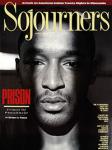The debt crisis on the minds of most Americans these days is the trade imbalance between the United States and Japan. The U.S. debt crisis is born from an almost immediate turnover of American dollars to Japanese corporations when Americans buy Toyota cars, Sony tapedecks, or Nikon cameras. Many American dollars only get one turnaround in U.S. commercial markets.
But white America has done just the same thing to black America. According to Tony Brown, syndicated columnist and TV talk-show host, while most ethnic groups turn money over within their communities five to 12 times, post-integration America sees blacks turning their money intracommunity less than one time. And just as Americans see their fears rise as the debt does, white Americans need to understand that African Americans are watching that same financial drain on their communities. Integration has made the economic indebtedness and dependency even greater.
Twenty-five years have passed since the last great legislative civil rights victory -- the Voting Rights Amendment, which was debated in Congress in June 1965 and signed into law on August 6, 1965. With the passage of time, we have the opportunity to look back at what integration has meant.
POPULAR CULTURE -- WHETHER YOU like it or not -- is a window to the soul of our society. By submerging ourselves in the symbols that define realities for our culture, we are sometimes able to re-examine and re-evaluate what we have thought essential.
Twenty-five years ago white Americans were not likely to see any African Americans in most of the places where they shopped, ate, or worked. They would not have been prominent characters in popular TV sitcoms; they would not have been selected as Miss America; they would not have been elected state governor or taken seriously as a presidential candidate. So for a small number of blacks, there is now room at -- or at least near -- the table of opportunity. But there is not room for the whole community.
And since there is only room for a few, it is mostly superstars who get there. Michael Jackson, Oprah Winfrey, Bill Cosby, and Julius Erving can "make it," but lots of others cannot. And while integration was necessary to make room for even a few black people, it also brought an inevitable reality.
Black-owned businesses, which had supported the rise to fame of the superstars, could not compete, by and large, with the better financed, white-owned enterprises that invited the stars in. Many of those businesses went under, taking with them much of the income -- and a measure of self-reliance -- that had provided the safety net for other African Americans.
Before, black Americans had purchased most of their goods and services from other black Americans. Their paychecks were recycled through the African-American community several times over. When the institutions were lost, so were the paychecks -- often after just one pass through.
Before Jackie Robinson crossed the color divide in baseball, there existed a black-owned, black-managed, black-fielded baseball league. And it was tremendously successful. The Chicago American Giants of the Negro National League not only were tremendously successful, they were very popular. The American Giants sometimes had more people attending games than either of the white-owned teams in Chicago. Black-owned businesses supported the teams with advertising as well as concession services and jobs.
Once the "Major Leagues" started accepting the best African-American players, the level of support for the black-owned teams waned, and they folded. African-American players made less money (for a while). And the black community was hurt.
A similar thing happened in the music industry. As Nelson George documents in The Death of Rhythm and Blues, when black musicians were allowed into white-owned clubs, the minority music houses were not able to hold the clientele who followed their favorite stars into other arenas. As popular black musicians crossed over into the wealthier white market, stable institutions went under and some wallets got thinner. Others, of course, grew.
The corresponding problem is that, while there is room for the cream of the African-American crop at the top, there is less room for average talent and entry-level performers. Proven acts have the chance to prove themselves over and over again, but new voices can't get heard in a white-dominated publicity network.
Capitalists are always looking for new markets. And the one color that can blind all others is green-profit. Once those with money could see the potential, they were willing to overlook their prejudice in order to cut a deal.
What does this mean for developing black institutions now? In the 1920s a strong and secure black film industry was destroyed when former leading men and women took bit parts -- as maids, butlers, and gardeners -- in white films. But with the success of Spike Lee, the Hudlin brothers, and Robert Townsend, a new age of black filmmaking is burgeoning. Similarly, rap music, because of its low production costs, has meant that some musicians have been able to initiate new recording companies. These filled the void left when other black-owned music enterprises folded as white-owned companies took the talent.
Will this current renaissance in African-American art pull the community intact into the mainstream of the culture market? That may be the most important question for the black community in the future. It's the way out of a debt crisis that African Americans didn't create.
Bob Hulteen was Under Review editor of Sojourners when this article appeared.

Got something to say about what you're reading? We value your feedback!